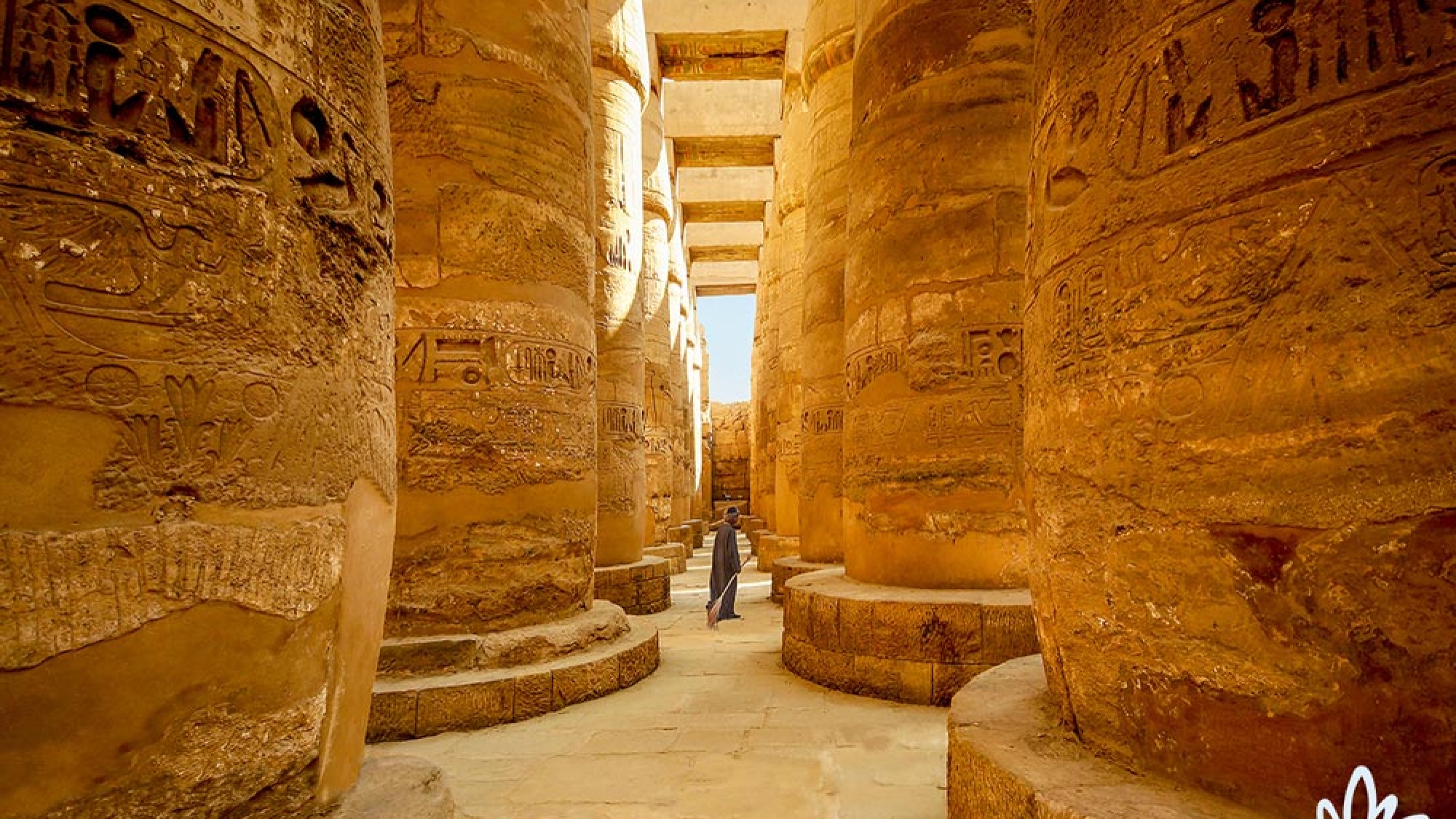A Trip to Karnak: The Largest Religious Site in the World
Today we’re going back a vast astrological age of thousands of years before Christ, to the ruins of the temple complex at Karnak in Egypt. When you think of sacred sites in Egypt, you probably think of the Great Pyramid at Giza, the largest pyramid in the world, and the mystery of the Sphinx. But at Karnak the massive structures, well-preserved artwork, and the hieroglyphic inscriptions on walls and columns make clear that this was one of the most sacred religious sites in Egypt—one that was in constant use for over 2,000 years—until 336 CE when the Roman emperor Constantias II ordered all pagan temples closed.
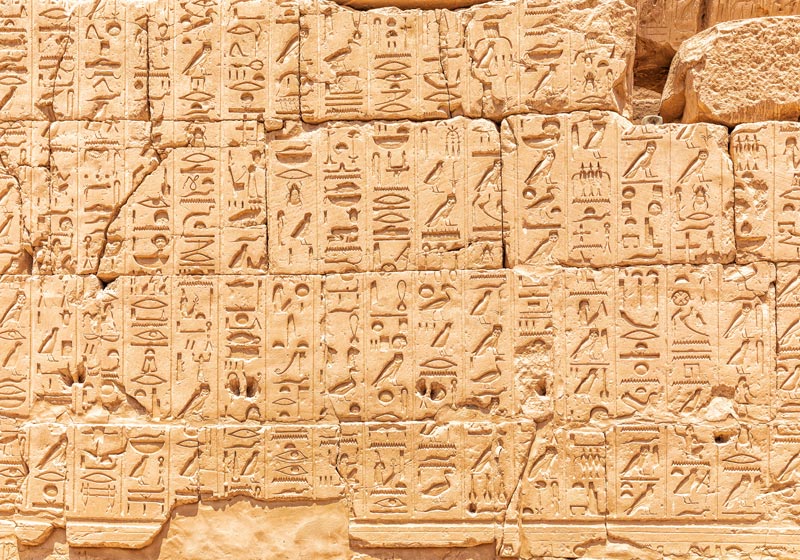
Karnak used to be known as the Temple of Amun. Amun was the supreme king of the gods, a combination of the creator-god Atum with Ra, the sun god. His temple was called “The Most Select of Places” because of an ancient belief that when the first mound of earth arose from the waters at the very beginning of the world, the god Atum stood on that original land and began to create the world.
The temple of Amun reflects the idea of zep tepi, the “first time,” in that the gateways (the pylons) are the horizon, and as you move deeper into the temple, the floor gets higher like a rising mound until it reaches the inner sanctuary. The roof, decorated with birds and stars, indicates the sky, while the columns with lotus, papyrus, and palm designs reflect creation.
It is truly amazing how little has changed over the millennia in our human beseeching of the divine. Here is a translation of an ancient Egyptian religious poem:
Turn thyself now, Eternal, to us-ward,
Thou who was here before any existed.
Darkness came on me at thy mighty bidding,
Grant me the light to behold all thy beauty.
Lo, as thy spirit endureth for ever,
Living in love and in beauty eternal,
So do I know that thou hearest afar off,
Hastening hither that I may behold thee.
If thou art sought, God great and eternal,
Fear is expelled and joy is our portion.
Joyous is he who find thee, O Amon!
Here in his temple, Amun, the ruler of the universe, could be in direct contact with the pharaohs, the rulers of the Egyptian people on Earth.
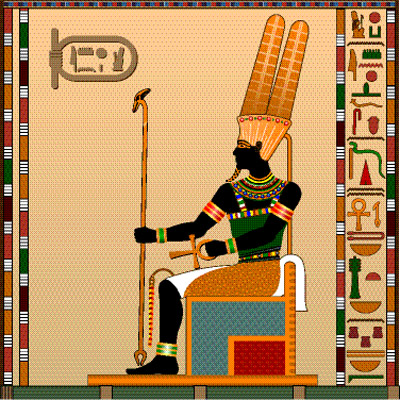
Amun, in the guise of a man, wearing the double crown of Egyptian rulers
The Temple of Amun took centuries to build, as each Egyptian ruler of the Middle Kingdom, the New Kingdom, and the Ptolemaic Dynasty added to the site, starting around 2040 BCE till about 30 BCE. The whole complex makes up the largest religious site in the world (possibly the second largest after Angor Wat), covering over 250 acres with temples, obelisks, chapels, columns, and statues. The main temple, the Great Hypostyle Hall (close to 54,000 sq. feet), is so big that you could fit three Notre Dame Cathedrals in it!
The temple complex honors Amun along with Osiris, Isis, Montu, Ptah.

The Goddess Isis and the ankh, the symbol of life, carved into the temple wall at Karnak
The god Montu, an even earlier deity than Amun, was worshipped at this site during the astrological age of Taurus, the bull. When the shift to the age of Aries, the ram, happened, the Temple of Amun supplanted the original temple to Montu, as attested to in the “sphinx alley” at Karnak in which the sphinxes are rams.
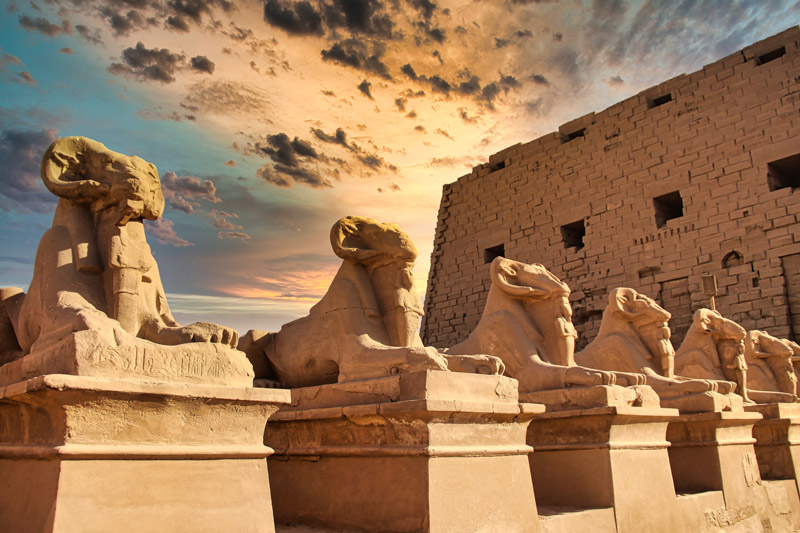
The site was also used as an observatory to align with the stars. The inner sanctum of Amun’s temple was aligned with sunset at summer solstice, while Ra’s shrine is aligned with winter solstice. The whole complex is aligned with various celestial events.
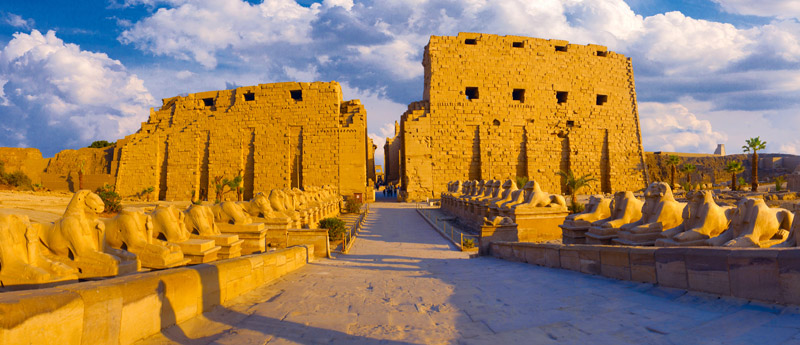
What our travel to different sacred sites shows us is that the true wisdom of the ages has not changed throughout time. Here is a quote from the Egyptian Book of the Dead (Muata Ashby, The Book of Coming Forth by Day):
There are two roads which human beings can follow, one of wisdom and the other of ignorance. The path of the masses is generally the path of ignorance, which leads them into negative situations, thoughts and deeds. These in turn lead to ill health and sorrow in life. The other road is based on wisdom and it leads to health, truth happiness and enlightenment.
The sheer size of Karnak reveals just how important it was to one of the greatest civilizations our world has ever known. A mysterious civilization that held secrets we still can’t unravel today. But you can get a taste of their wisdom – their energy – by visiting sites like Karnak. And if you can’t visit physically, you can always visit from the comforts of your own home by leveraging a different kind of wisdom with our bestselling Astral Wisdom Course.
It will teach you how to tap into your hidden power of Astral Travel, so that you can project yourself, uninhibited by time and space, to experience first hand the times and locations of your choosing (such as ancient Egypt). Click here to access the course and master this skill >>

